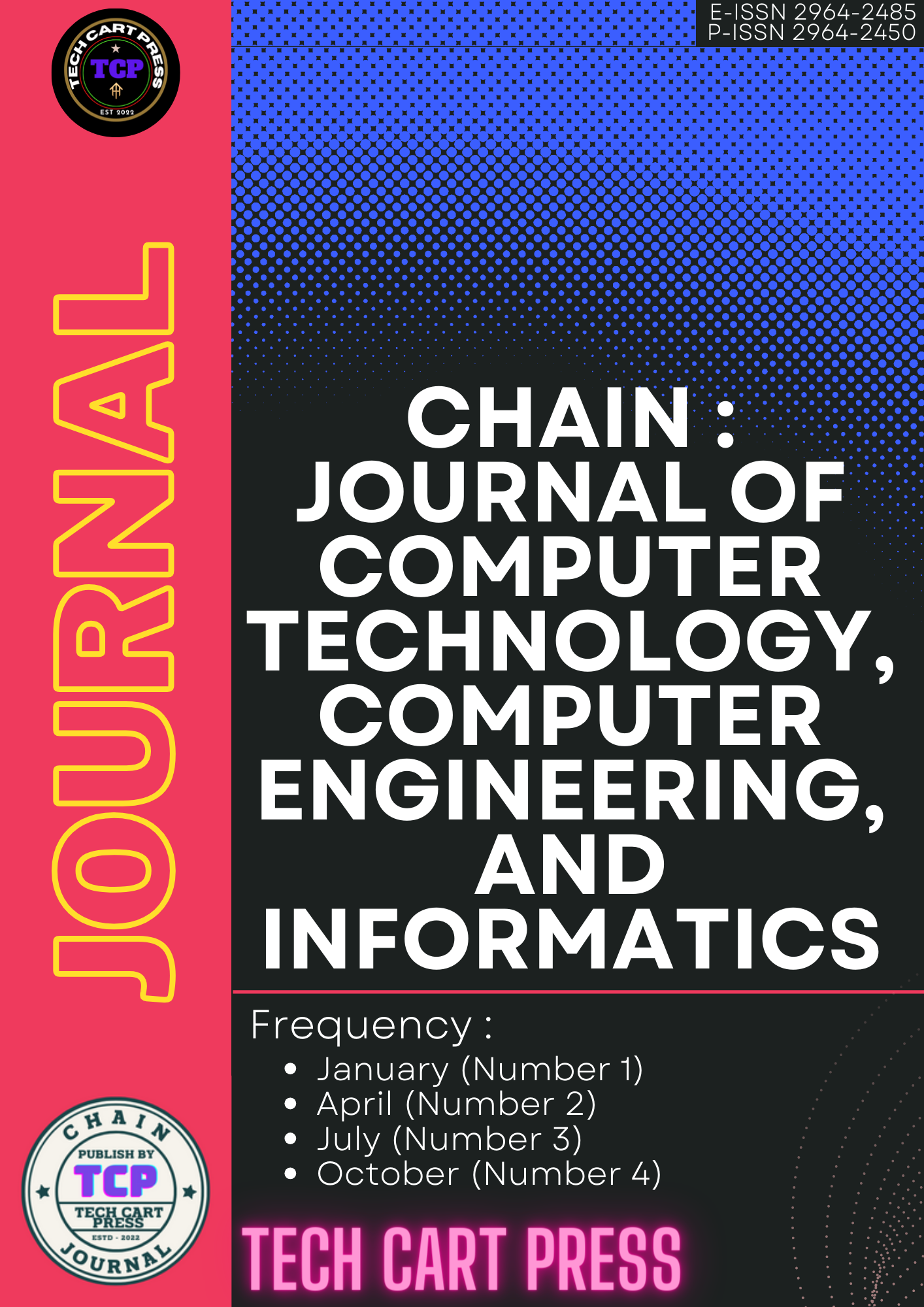Penerapan Combined Compromise Solution Method Dalam Penentuan Penerima Beasiswa
Abstract
This study aims to solve the problem of determining scholarship recipients through a decision support system with output in the form of ranking using the Combined Compromise Solution Method. The application of the Combined Compromise Solution (CoCoSo) method in determining scholarship recipients will result in a comparison of the scores of all students who register to receive scholarships from schools. So that through the decision support system developed it can produce prospective scholarship recipients according to predetermined criteria and the selection process does not take long because the decision support system built is equipped with a web-based application using Laravel 8 which is used to determine scholarship recipients. Calculations for determining scholarship recipients using the Combined Compromise Solution (CoCoSo) show that the results of calculating the final score of the 1st scholarship recipient received a final score of 2.7031 obtained by Dwi Adhawati, the 2nd scholarship recipient received a final score of 1.9111 obtained by Muhammad Ferdi, and the 3rd scholarship recipient with a final score of 1.8684 was obtained by Muhammad Irfan.
References
M. N. D. Satria, “Sistem Pendukung Keputusan Penerimaan Staff Administrasi Menggunakan Metode VIKOR,” J. Artif. Intell. Technol. Inf., vol. 1, no. 1, pp. 39–49, 2023.
A. F. O. Pasaribu and N. Nuroji, “Sistem Pendukung Keputusan Penentuan Pelanggan Terbaik Menggunakan Profile Matching,” J. Data Sci. Inf. Syst., vol. 1, no. 1, pp. 24–31, 2023.
M. A. Abdullah, I. Fitri, and N. D. Nathasia, “Sistem Pendukung Keputusan untuk Menentukan Hasil Bisnis Pujasera Terbaik dimasa Pandemi Covid 19 dengan Metode Fuzzy Tahani dan Simple Additive Weighting (SAW) berbasis Website (Studi Kasus: Pujasera Hangout Salihara),” J. JTIK (Jurnal Teknol. Inf. dan Komunikasi), vol. 5, no. 1, p. 97, 2020, doi: 10.35870/jtik.v5i1.202.
V. Maarif, I. Maryani, Y. M. Kristania, R. Wijianto, and C. M. Hellyana, “SISTEM PENDUKUNG KEPUTUSAN MENENTUKAN STRATEGIC LOCATIONS ADVERTISEMENT PLAN PADA WILAYAH BANYUMAS MENGGUNAKAN METODE AHP,” EVOLUSI J. Sains dan Manaj., vol. 10, no. 2, 2022.
S. Kusumadewi, H. Wahyuningsih, T. Informatika, U. I. Indonesia, U. I. Indonesia, and P. Korespondensi, “Model Sistem Pendukung Keputusan Kelompok Untuk Penilaian Gangguan Depresi , Kecemasan Dan Stress Berdasarkan Dass-42 Group Decision Support System Model for Assessment of Depression , Anxiety and Stress Disorders Based on Dass-42,” Model Sist. Pendukung Keputusan Kelompok Untuk Penilai. Gangguan Depresi, Kecemasan Dan Stress Berdasarkan Dass-42, vol. 7, no. 2, pp. 219–228, 2020, doi: 10.25126/jtiik.202071052.
Y. M. Kristania, R. Rousyati, D. Pratmanto, and S. Aji, “Sistem Penunjang Keputusan Pemilihan Penerima Beasiswa Dengan Metode Analytical Hierarchy Process (AHP) Di SMK Era Informatika Tangerang Selatan,” Indones. J. Softw. Eng., vol. 7, no. 2, pp. 212–219, 2021.
T. Nosilia, D. M. Midyanti, and R. Hidayati, “PENERAPAN METODE COMBINED COMPROMISE SOLUTION (CoCoSo) DALAM PENENTUAN PENERIMA PINJAMAN KREDIT DI KOPERASI CU KELING KUMANG SINTANG BERBASIS WEB,” Coding J. Komput. dan Apl., vol. 9, no. 02, pp. 282–291.
D. M. Sari, N. Arifin, and A. M. Yusuf, “Implementation of Decision Support System for Scholarship Recipients at Bank Indonesia,” Ceddi J. Educ., vol. 1, no. 1, pp. 13–22, 2022.
A. Sani, S. Aisyah, M. Rachmawati, P. Dian, and N. Wiliani, “Analysis Of Decision Support Systems for Candidate Selection Scholarship Recipients Using TOPSIS Method,” in Proceedings of the 2nd International Conference on Law, Social Science, Economics, and Education, ICLSSEE 2022, 16 April 2022, Semarang, Indonesia, 2022.
S. Setiawansyah, A. T. Priandika, B. Ulum, A. D. Putra, and D. A. Megawaty, “UMKM Class Determination Support System Using Profile Matching,” Bull. Informatics Data Sci., vol. 1, no. 2, pp. 46–54, 2022.
N. F. Fahrudin and A. D. Wahyudi, “Modeling Inventory Systems Using The User Experience Design Model Method,” J. Data Sci. Inf. Syst., vol. 1, no. 1, pp. 9–16, 2023.
S. Maryana and D. Suhartini, “Implementasi Certainty Factor Untuk Diagnosa Penyakit Sapi,” Chain J. Comput. Technol. Comput. Eng. Informatics, vol. 1, no. 1, pp. 14–20, 2023.
A. F. O. Pasaribu and A. D. Wahyudi, “Used Car Sale Application Design in Car Shoowroom Using Extreme Programming,” Chain J. Comput. Technol. Comput. Eng. Informatics, vol. 1, no. 1, pp. 21–26, 2023.
Y. M. Kristania, “Sistem Informasi Rental Mobil (Si Robi) Berbasis Web Pada Sewa Mobil Sahabat Purwokerto,” Indones. J. Softw. Eng., vol. 8, no. 2, pp. 131–137, 2022.
P. Rani, J. Ali, R. Krishankumar, A. R. Mishra, F. Cavallaro, and K. S. Ravichandran, “An integrated single-valued neutrosophic combined compromise solution methodology for renewable energy resource selection problem,” Energies, vol. 14, no. 15, p. 4594, 2021.
M. Yazdani, Z. Wen, H. Liao, A. Banaitis, and Z. Turskis, “A grey combined compromise solution (CoCoSo-G) method for supplier selection in construction management,” 2019.
M. Yazdani, P. Zarate, E. Kazimieras Zavadskas, and Z. Turskis, “A combined compromise solution (CoCoSo) method for multi-criteria decision-making problems,” Manag. Decis., vol. 57, no. 9, pp. 2501–2519, 2019.
Copyright (c) 2023 Yustina Meisella Kristania

This work is licensed under a Creative Commons Attribution-ShareAlike 4.0 International License.






